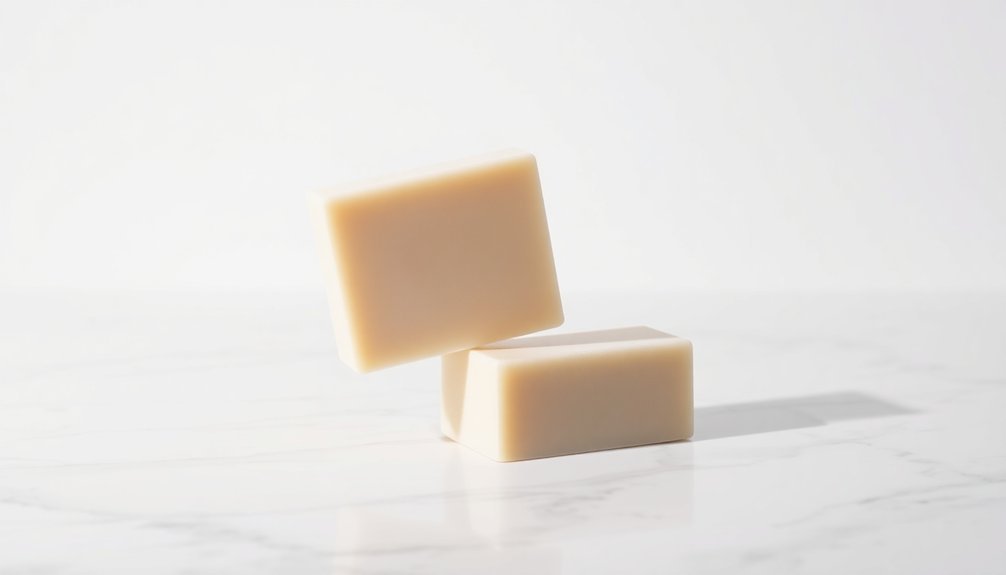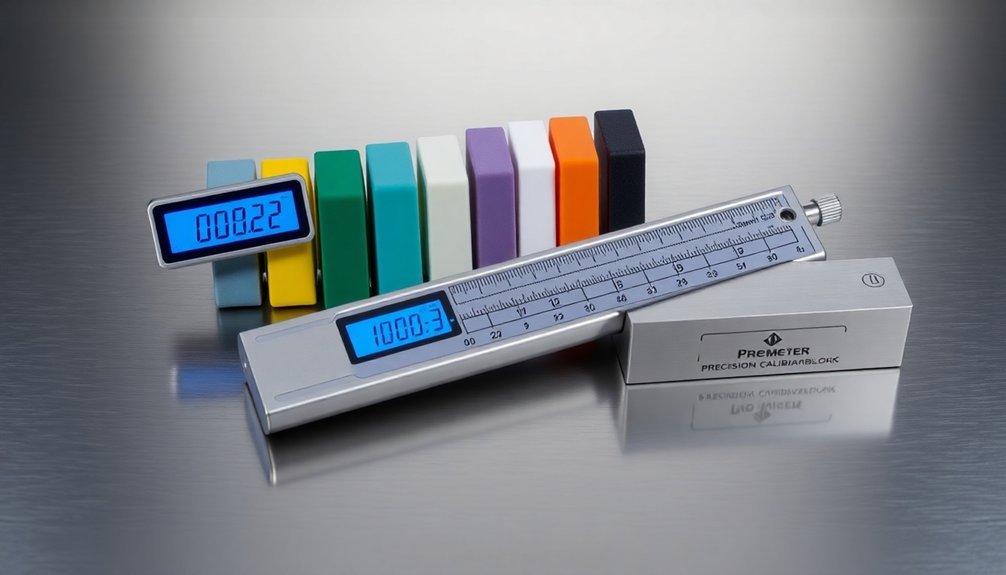You can test your bar's firmness using three reliable methods. Start with the thumb press test by applying gentle pressure to check for proper give without mushiness. Next, try the drop and bounce test from a set height to evaluate resilience and elasticity. For precise measurements, use a digital durometer to get exact readings of surface hardness. These techniques will help you master the art of bar assessment.
The Thumb Press Method

When evaluating bar firmness, the Thumb Press Method offers a quick and reliable initial test. You'll find this technique particularly useful as it mirrors the same approach you'd use to assess fruits and vegetables for ripeness. Simply apply pressure with your thumb to check the bar's texture.
To get consistent results, maintain uniform pressure each time you test different bars. You'll want the bar to give slightly under your thumb without feeling mushy or overly soft.
While this method isn't as precise as other testing techniques, it serves as an excellent preliminary assessment before moving on to more rigorous evaluations. Remember that proper firmness indicates your bar has achieved the right consistency, much like when you're checking produce for ideal ripeness.
The Drop and Bounce Test

Although less formal than laboratory methods, the Drop and Bounce Test provides quick insights into a bar's firmness and elasticity.
You'll simply drop your bar from a standardized drop height and observe the rebound height to assess its material properties.
When you perform this test, a higher rebound height indicates greater firmness and resilience in your bar. If the bar bounces back considerably, it's likely well-made with consistent material properties. Conversely, a lower rebound might signal softness or potential internal flaws that need attention.
While the Drop and Bounce Test offers valuable preliminary insights, don't rely on it exclusively.
For thorough material evaluation, you'll want to combine this method with more rigorous testing methods. This guarantees you get a complete understanding of your bar's quality and performance characteristics.
Digital Durometer Assessment

Digital durometers represent the gold standard for precise bar firmness testing. You'll get accurate, quantifiable results by measuring the indentation depth when the device applies force to your bar's surface. This professional hardness testing method eliminates guesswork and provides consistent measurements you can rely on.
When you're using a digital durometer, you'll notice its clear display makes reading measurements straightforward and error-free. The device complies with ASTM D2240 standards, ensuring your performance assessment meets industry requirements. You can choose between Shore A and Shore D scales, depending on your bar's material properties.
For the most reliable results, you'll want to calibrate your durometer regularly and take multiple readings across different areas of your bar. This systematic approach delivers precise readings that help you maintain quality control.
Frequently Asked Questions
How Do You Test the Strength of a Steel Bar?
You can test steel bar strength through tensile testing, bend tests, and hardness measurements. You'll also want to conduct chemical analysis and use non-destructive testing to check for internal defects and quality.
How Do You Test the Quality of Reinforcement Bars?
You can test rebar quality through tensile strength tests, bend tests, chemical analysis, and non-destructive testing. You'll also want to perform visual inspections and dimension checks to guarantee they meet required standards.
Is There a Code for Rebar Testing?
Yes, you'll find several key codes for rebar testing: IS 1786:2016 (Indian), ASTM A615 (American), ISO 15630-1 (International), and EN 10080 (European). These standards specify required tests and quality parameters.
How Do You Test the Strength of Steel?
You can test steel's strength through tensile testing to measure yield and breaking points, hardness testing like Brinell or Rockwell methods, and chemical composition analysis to verify material properties. NDT methods provide non-destructive verification.
In Summary
Testing your bars' firmness doesn't have to be complicated. You've now learned three reliable methods – the simple thumb press, the bounce test, and digital durometer testing. Whether you're choosing the hands-on approach or going high-tech, you'll get consistent results. Remember to test multiple spots on each bar and document your findings for future reference. Pick the method that works best for your needs.





Leave a Reply